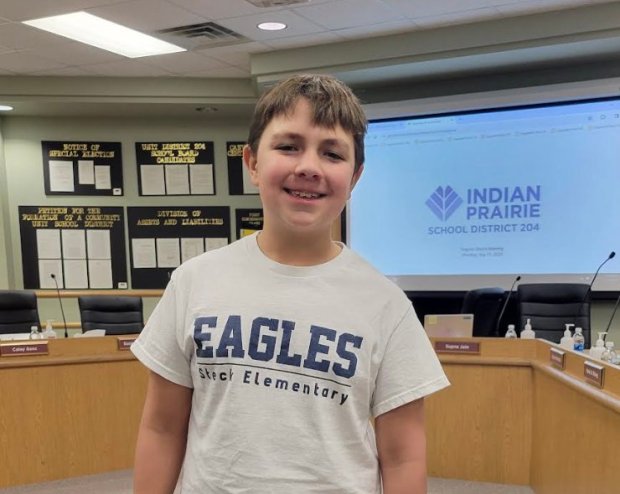A new science, technology, engineering and math program for kindergarten to fifth-grade students in Indian Prairie School District 204 has students engaged, collaborating and thinking outside the box, officials said.
The program, called SAM Labs, uses building blocks with lights, motors and more that connect to a computer via Bluetooth to teach students about science and coding. It is currently in year two of a three-year implementation plan, and an update on its progress was presented to the school district’s Board of Education on Feb. 5.
“I liked SAM Labs because I got to choose what to do for the system and how to make it better, more efficient and faster, and I like working with partners and helping other people to make theirs better,” Graham Barfus, a fourth-grade student at Steck Elementary School in Aurora, told the board.
Savannah Smith, Graham’s mother and a teacher at Waubonsie Valley High School, told the board that the program has been “so wonderful” for Graham. When he comes home, he is always excited to tell them about what he did that day in SAM Labs, she said.
“He participated in a STEM camp over the summer too,” Smith said. “That’s something that we hadn’t had interest in prior to this.”
Dee Batchelder, who was Graham’s third-grade teacher at Steck Elementary, said the program gives students real-world experience that lets them work hands-on with blocks and computers and engages their critical thinking.
“They are just so excited when they come back,” Batchelder said. “I have a little pack that comes back every morning and that talks about it.”
The program is primarily used in the science curriculum, but Batchelder said it can be used in others too, like math and social emotional learning. In each of the curriculums, the SAM Labs program lets students come up with their own designs.
While studying magnets in science, Batchelder said she challenged the students to design a car that is also a magnet experiment. One group of students created a car with a magnet on the front, then measured how far it could pull other magnets.
“That’s not something that I told them to do, it’s what they came up with, and that creativity piece is a huge lens that this SAM Labs gives,” Batchelder said. “An extension to that was that, instead of just pushing the button for it to go, we added a slider for power. So, how fast is the motor going?”
She used the power slider to illustrate the ways SAM Labs can meet each student where they are. Some students make simple creations, but others want to dive deep and make things that are complex.
Because students are instructed to be creative, they sometimes fail. Batchelder said this is a good way to teach students the value of being happy for others and their success even if they are sad for their own failure.
“That’s a really hard thing for kids to understand,” she said. “There are tears sometimes, but those again are natural things and coping skills that we can work in place to go forward.”
While the majority of the presentation at the board meeting was given by adults, Graham personally explained to board members how SAM Labs works in the classroom.
He said he created a small car, roughly the size of his hand, and programmed its motor blocks so that the car would only go forward when a light block turned green. The light block sat on a 3D printed post and switched from red to yellow to green.
The SAM Labs program allows students to program special blocks, such as the ones used to power the car and the light, using a special visual coding language.
Visual coding is different from typical coding because it uses pictures to represent functions, like spinning a motor or changing a light’s color. These pictures are linked together with lines, which represent which order the functions happen in or which functions are dependent on the state of others.
Many members of the School District 204 board said they were impressed by Graham’s description of the program, and congratulated the presenters for the success of their program so far.
For teachers, the district provides internal support through two STEM instructional specialists, Latia Johnson and Elizabeth Kaleta, who have even started their own podcast to help teachers use SAM Labs in their classrooms.
Superintendent Adrian Talley said that SAM Labs is happy with what the district has been able to do with the program so far and that there might be “more to come.”
rsmith@chicagotribune.com



